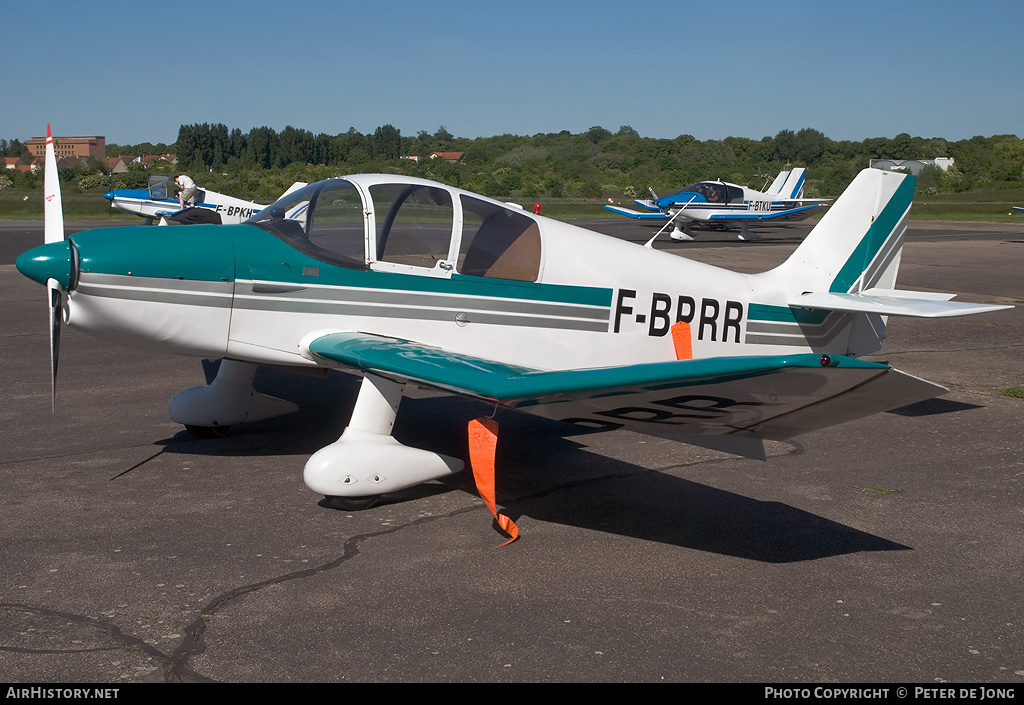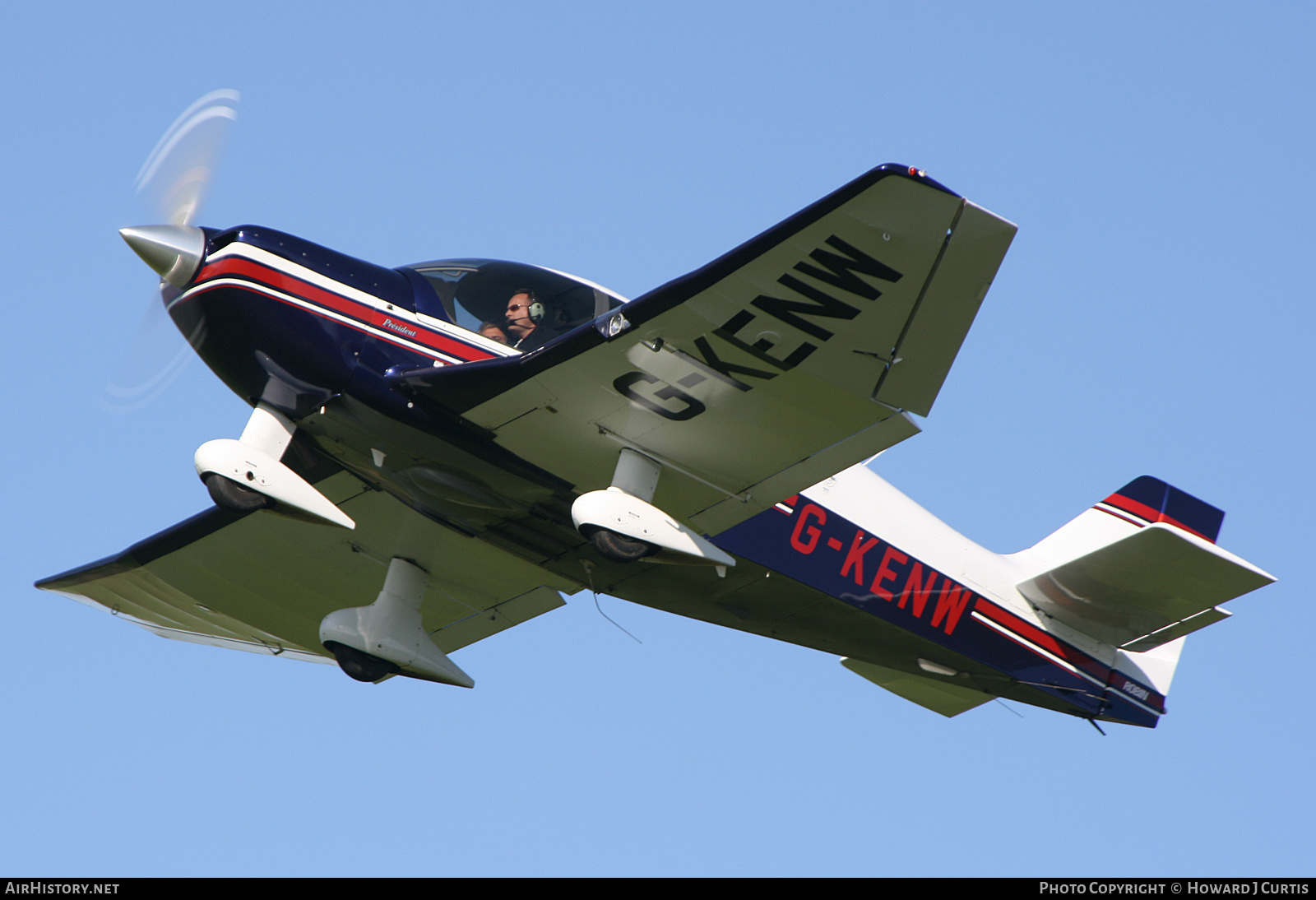Pierre Robin's little birds
By Peter de Jong25 August 2020
Pierre Robin died on 5 August 2020, aged 92. He was the founder of the number one producer of sport and touring aircraft in Europe, a company that built over 4000 planes - and still crafts them out of wood today.
The little Robins venture far afield, but they are endemic in France. Here a Jodel DR.221 Dauphin, built by Pierre Robin's CEA company, is seen with another DR.221 and a Robin DR.400 at Saint-Cyr, near Paris.
Photo: Peter de Jong
Born near Tours in 1927, Pierre Robin learned to fly following the liberation of France at a state-sponsored aero club. Soon he was a trainee instructor in the national aero club system, and in 1953, he got the job of chief pilot and instructor at the Aéroclub de la Côte d'Or at Dijon. He had not served in the air force or worked for an airline; apparently he was always instructor material. He is described as balanced and not too talkative, thoughtful, and a gentleman. But he showed other talents too, because he soon prospected a site for a new airfield, Darois, and managed to move his club here, away from the Dijon - Longvic airbase where Vampire and Ouragan jet fighters made uneasy bed partners.
He had also already built two light aircraft: a Pou-du-Ciel type with two friends in 1946, when he was 19, and a Jodel D.9. The D.9 Bébé was a tiny single-seater with an inverted gull wing and pretty good performance, intended for amateur-building. The two-seat D.11 development was designed for the state aero clubs, and Robin completed two examples for his club with his pupils. Meanwhile he had met Jean Délémontez, the designer, and he became a test pilot for the small Jodel company.
In 1956, Pierre wanted an aircraft capable of carrying himself, his wife Thérèse and their first child, and Délémontez sold him the wing of the three-seat D.10 prototype, which had never been completed because of the greater promise of the D.11. Robin joined this wing to a lengthened D.11 fuselage, so there was not much Robin in the so-called Jodel-Robin prototype, except Robin's belief in a family-sized Jodel, even factory-built. Délémontez reworked it as the Jodel DR.100, with DR standing for Délémontez and Robin, and in 1957 Robin started the CEA (Centre-Est Aéronautique) company, employing ten woodworkers in a small half-round hangar at Darois.
The first ten DR.100s found favour with local customers, and improved DR.105 and DR.1050 series aircraft soon entered production at both CEA and SAN in Normandy. Flight International published a raving review in 1960: 'If you want to enjoy your flying with your wife and children, tour for five hours or so at 4¾ gal/hr in a heated cockpit, or go off and do aerobatics by yourself, it is hard to imagine an aeroplane in which you could do it more cheaply and comfortably.'
On top of all that, the type was pretty fast, too, and started dominating general aviaton rallies held around Europe. Pierre Robin himself successfully competed in the prestigious rally around Sicily in in his own plane, F-BJLP. He took second place in 1961 and 1962, and won the 1963 edition in the same, now modified airframe. His average speed around the island was 272 km/h (169 mph) - not bad for what was basically a light family plane! It did not go unnoticed and CEA built 83 aircraft that year.
The main drawback was that accommodation was fairly tight - Jodels were never for big people, anyway, and the DR.100 series was restricted to two kids or one adult in the back. First flown in 1964, the DR.200 was designed as a true four-seater, produced as such in the DR.250 series although the DR.220 and DR.221 models were slightly smaller again. The DR.253 marked Robin's shift to tricycle (nosewheel) landing gear, and from this it was just two small steps to the DR.300 and, by 1972, the well-known DR.400 with its forward-sliding cockpit canopy, affording an excellent view to pilots and passengers alike. Still built of wood, the cranked-wing Robins often outperformed other light aircraft of the same engine power. Though still a small company compared to Cessna or Piper, Avions Pierre Robin, as CEA was renamed in 1969, had become a notable contender in the general aviation market.
The DR.253 was a crossroads in that this variant also formed the basis for a metal four-seat aircraft designed by Robin and Christophe Heintz, rather than Délémontez, hence the HR.100 designation of the type which first flew in 1969. The two-seat HR.200 trainer followed in 1971, and fitted with a new wing and tail became the Robin R2000 series. R2000 production moved to a Robin subsidiary in Lachute, Quebec for a few years in 1980.
In 1980, the French company flew the prototype of a new four-seater with a fancy T-tail, the R3000. Financial difficulties forced Robin to appeal to the French government for help, and one result was that planned upmarket versions of the R3000 were abandoned to avoid competition with the Socata TB family.
Meanwhile, Robin had high hopes for his radical new two-seater with a V tail, designed for aero club use in the true spirit of the Jodel D.11. Built partly of composites, the ATL (Avion Trés Légèr, very light aircraft) first flew in 1983, but was marred by problems with its JPX engine. A four-seat development with a conventional tail, the ATL II or Robin X4, was only built in prototype form, failing to become the hoped-for DR.400 replacement.
Seemingly no longer able to deliver what his customers wanted, Pierre Robin, then in his early sixties, sold his company to the French Apex Group in 1988, with production of the DR.400 continuing and that of the R2000 restarting at Darois in 1993. However, the R2000 rights and production line were sold to the Alpha company from Hamilton, New Zealand in 2004, and the type continued in production there for some time. DR.400 production at Darois came to a halt in 2008, suffering from the collapse of the German Thielert company, which made the Centurion engines for diesel-powered Robins. With the diesels now supplied by Continental, DR.400 deliveries were resumed by a new Robin Aircraft company at Darois in January 2012. An upgraded model, marketed as the DR.401, was introduced in 2014. The DR.401 has a roomier canopy inherited from the luxury DR.500 model that was built in small numbers around 2000, and modernized instruments.
The top-of-the-range DR.500 Président variant of the DR.400 introduced a bulbous canopy that gave 10 cm (4 inch) more width at the shoulders. This roomier canopy is also fitted to the DR.401, the latest version which still in production with the new Robin company at Darois.
Photo: Howard J Curtis
Pierre Robin passed away with the DR.401, the last offspring of the wooden Jodel-Robin lineage, still in production with a company bearing his name at Dijon - Darois. Just 8 km from the airfield he prospected himself, Robin was buried on 7 August 2020 at the Notre-Dame de Talant church near Dijon.
For more details about the aircraft please refer to the excellent Jodel & Robin Construction Lists by David Wise.























































